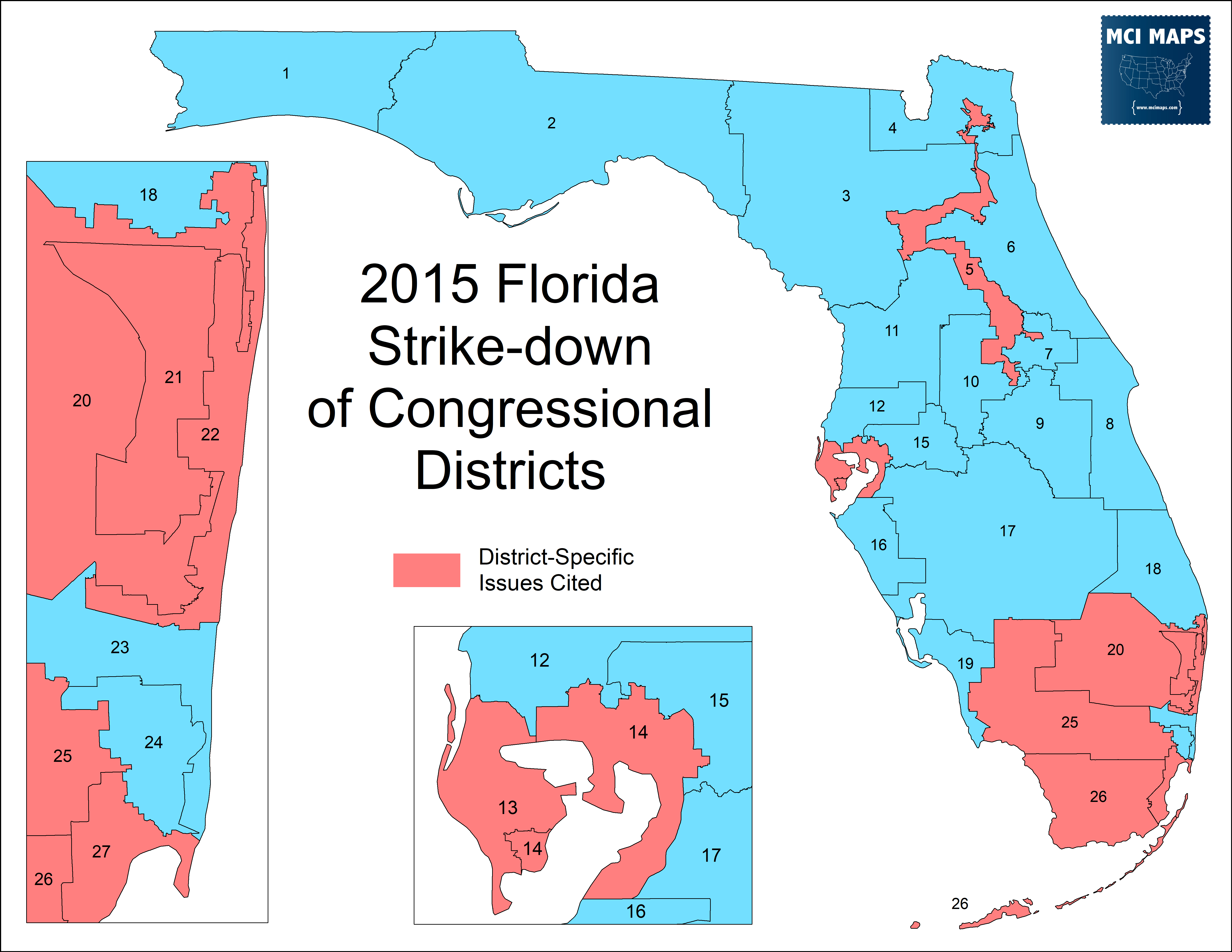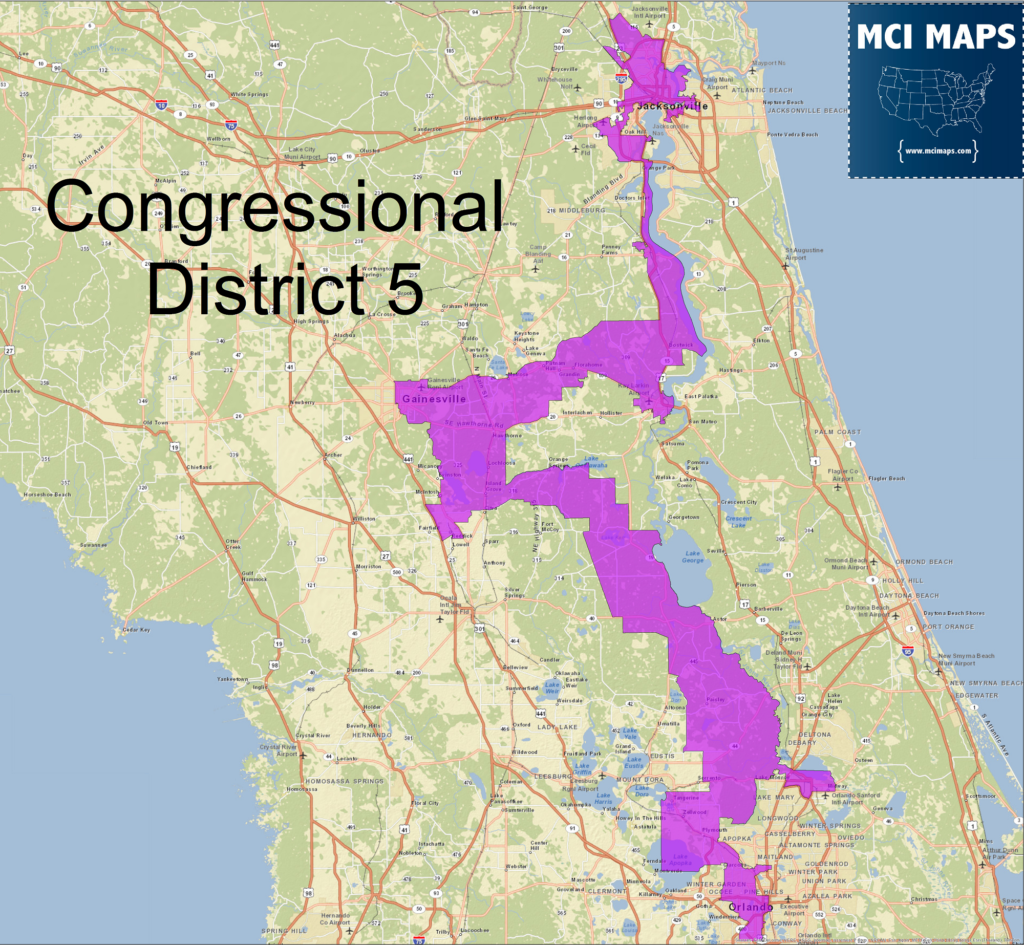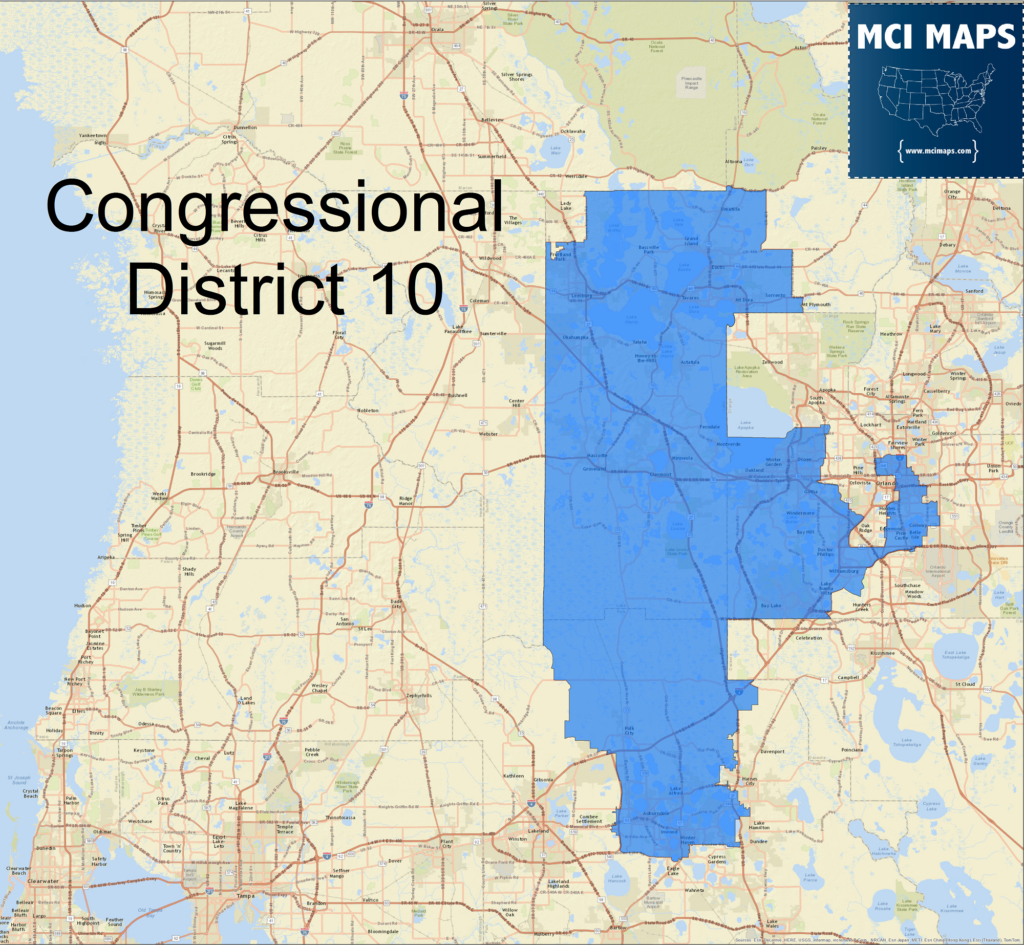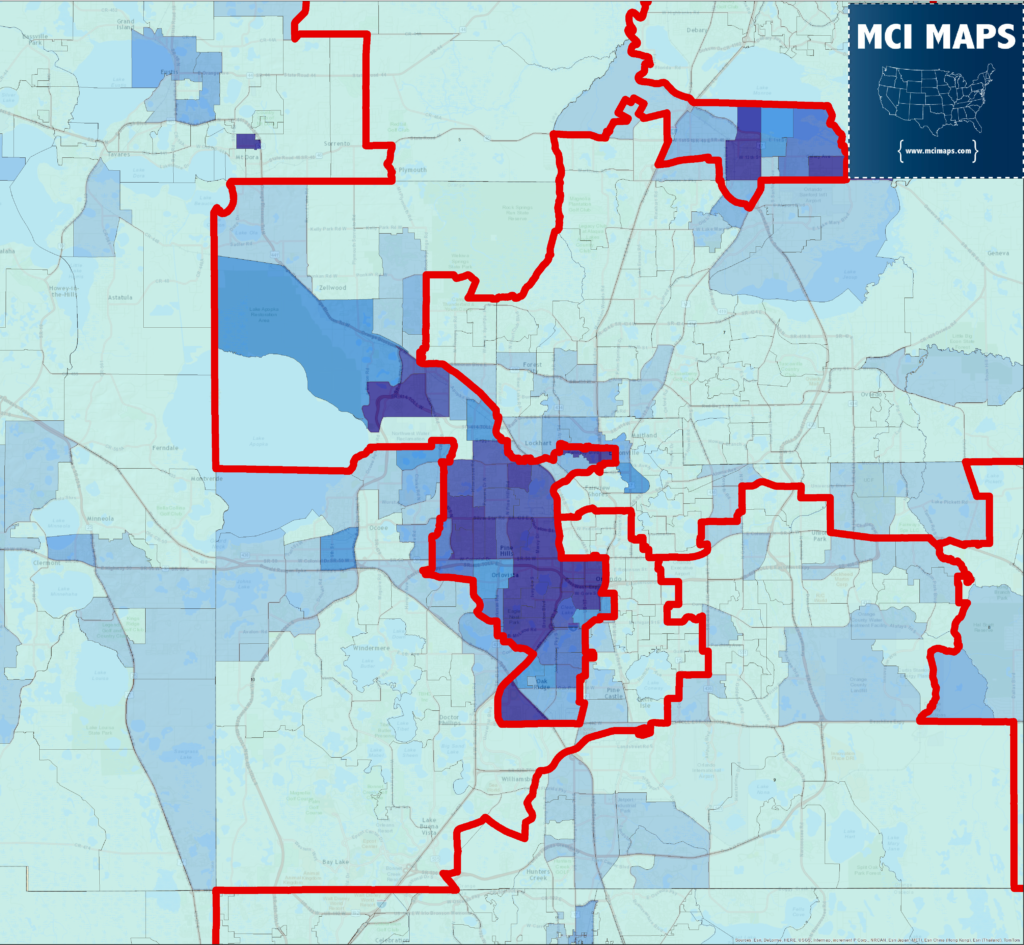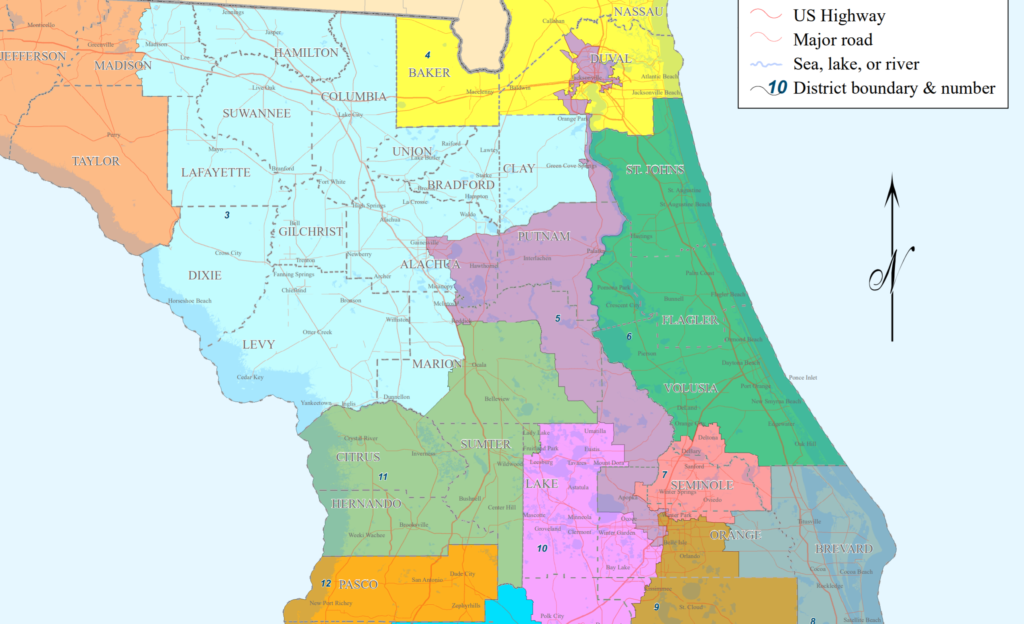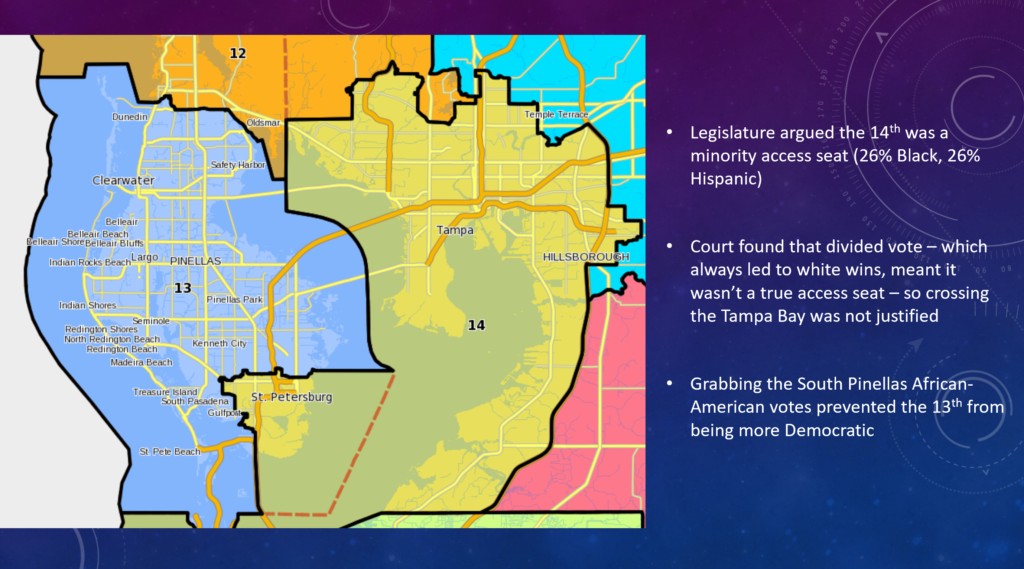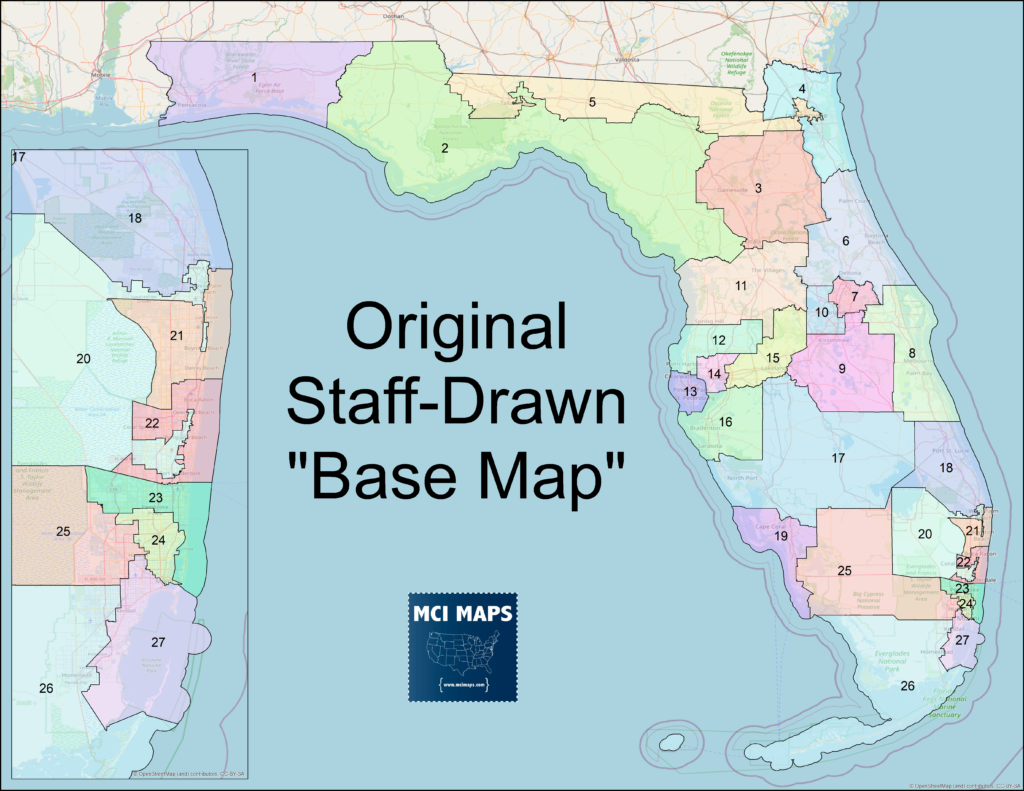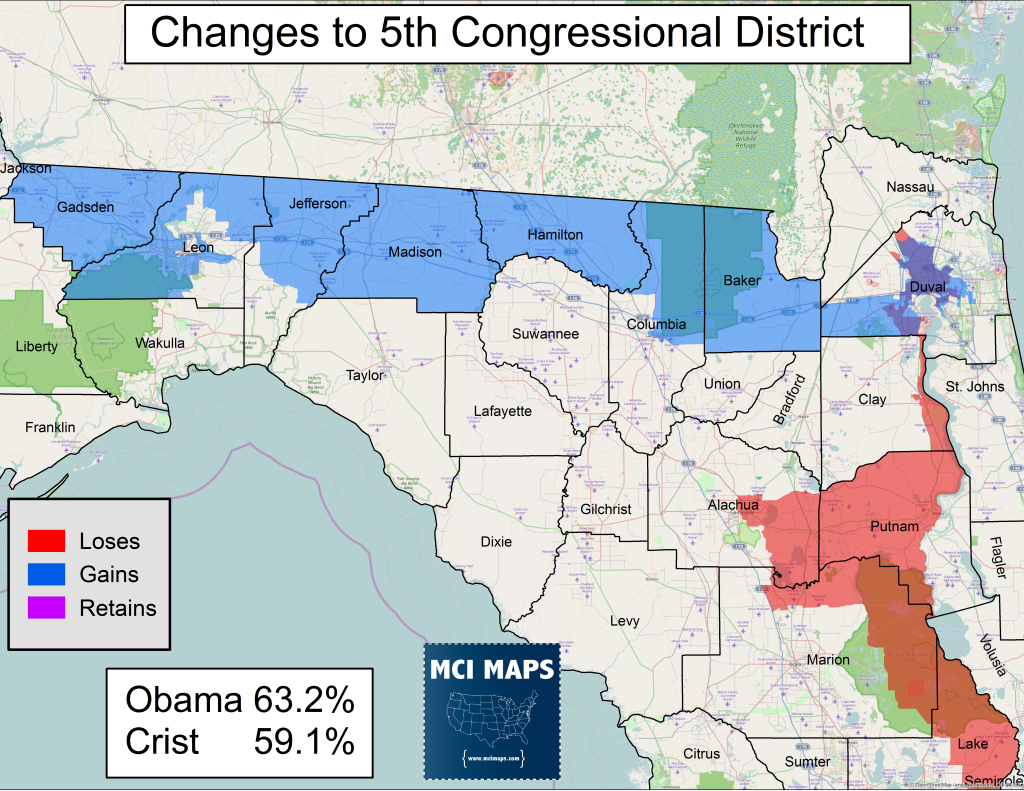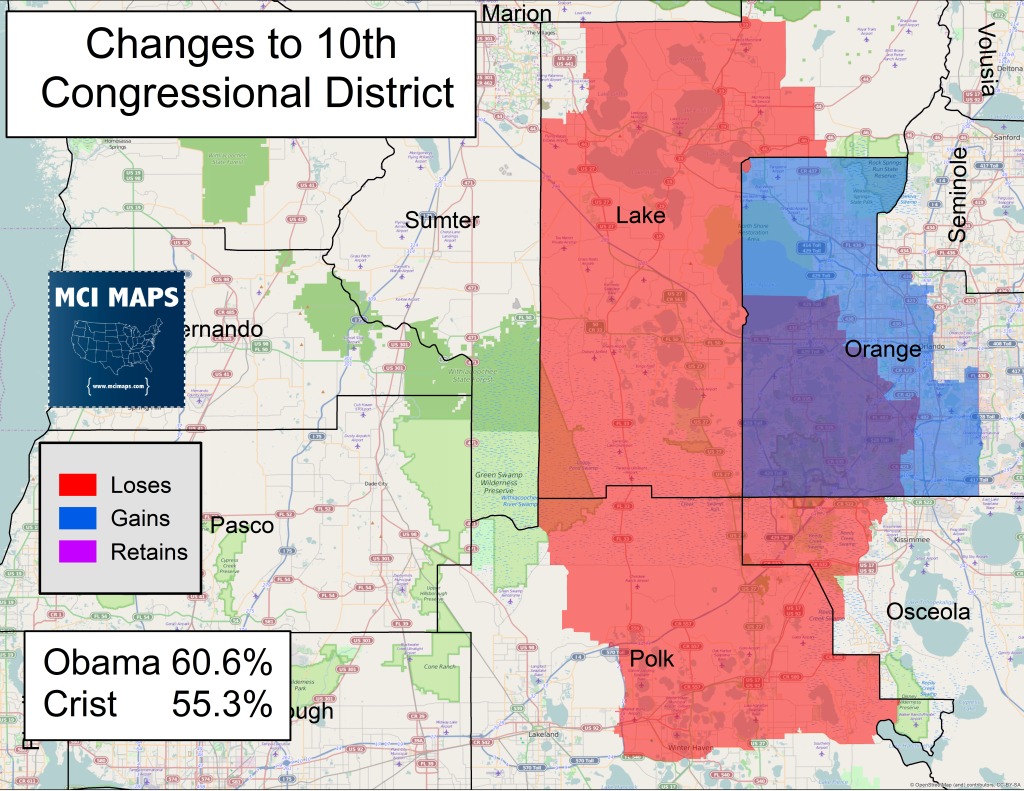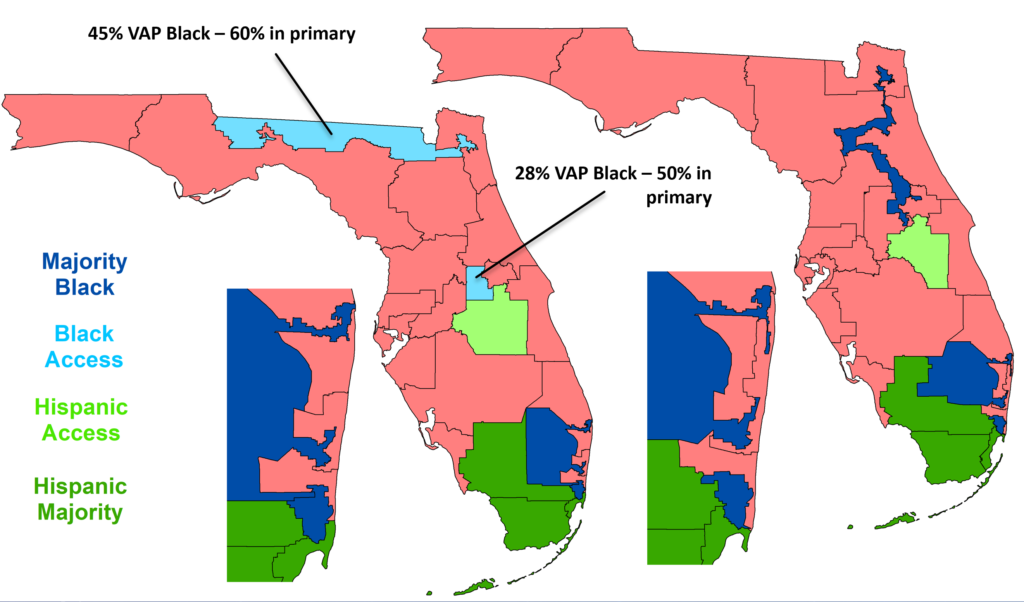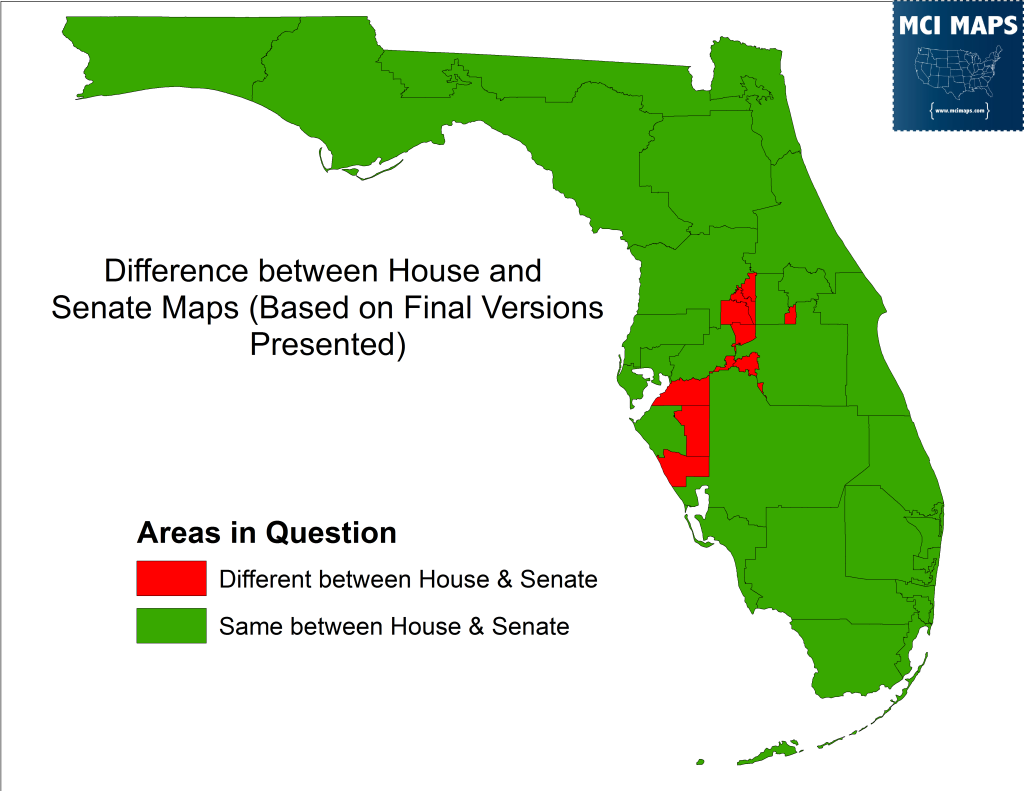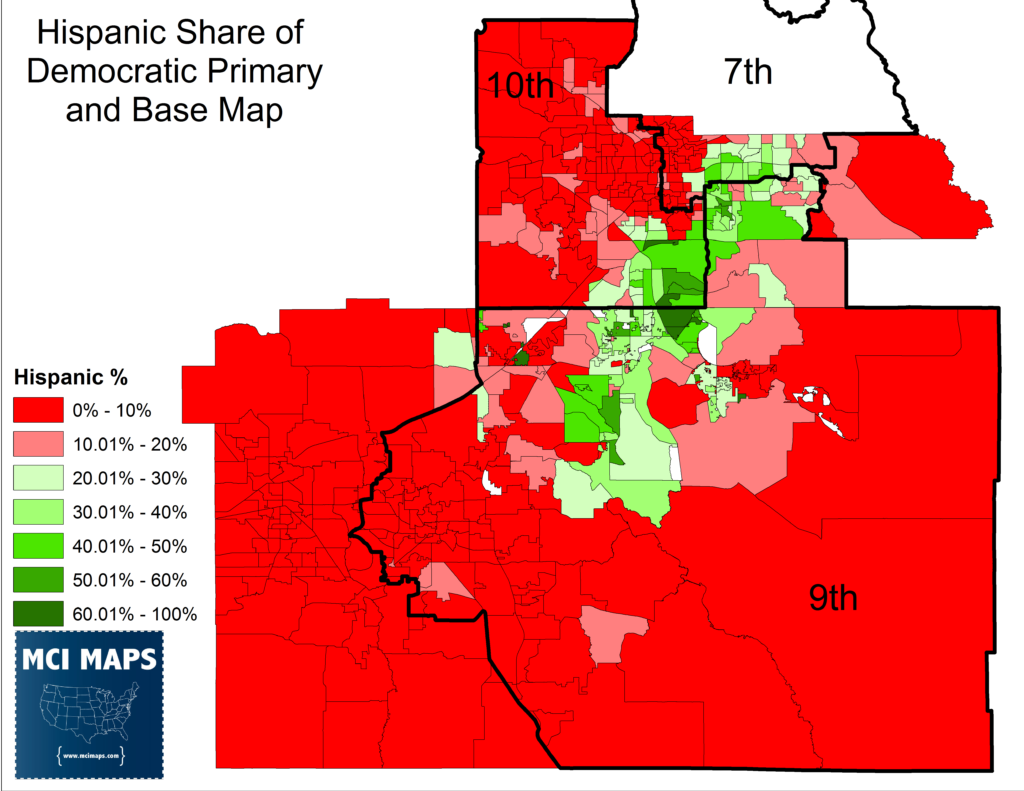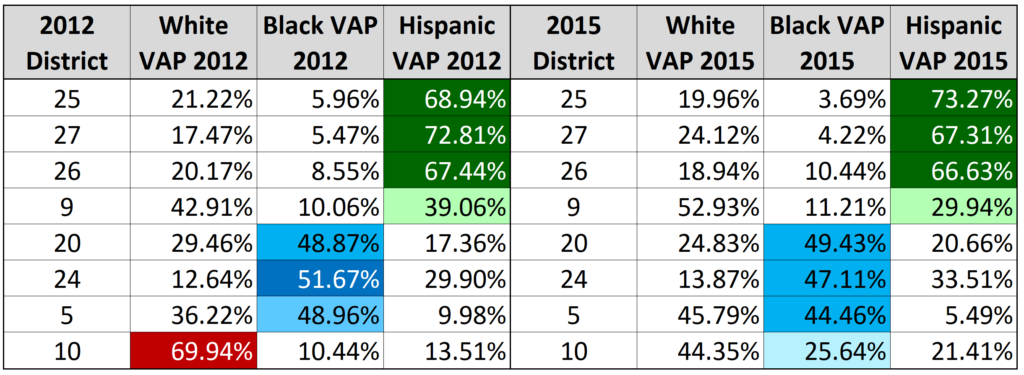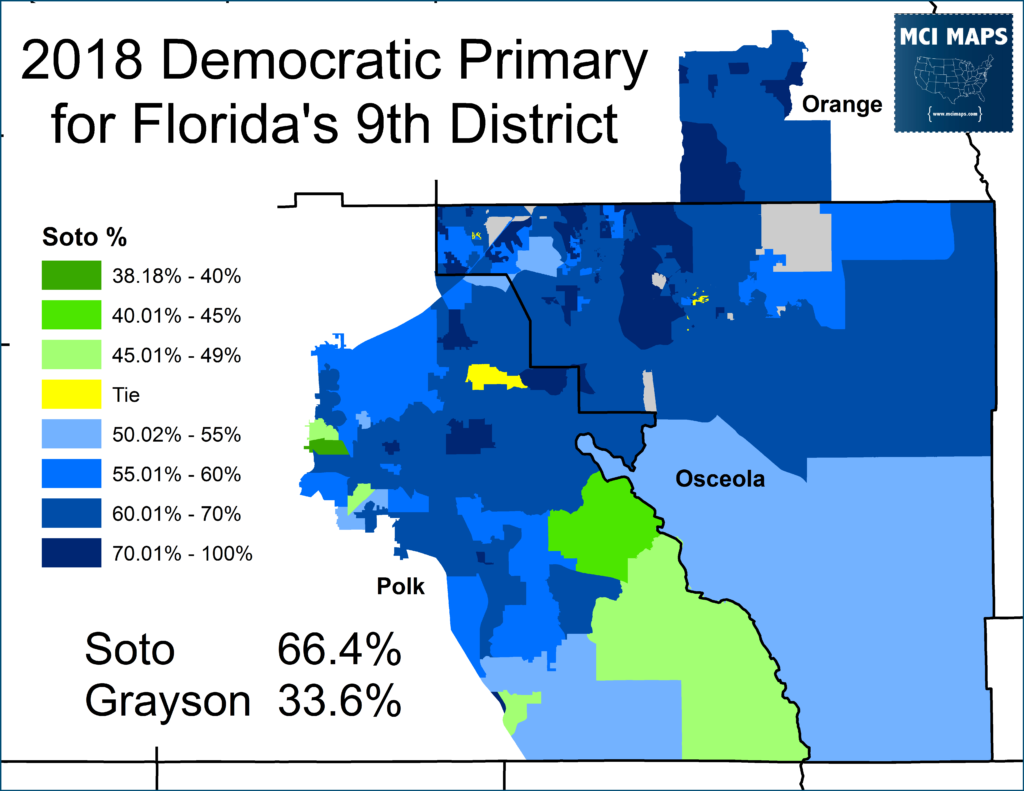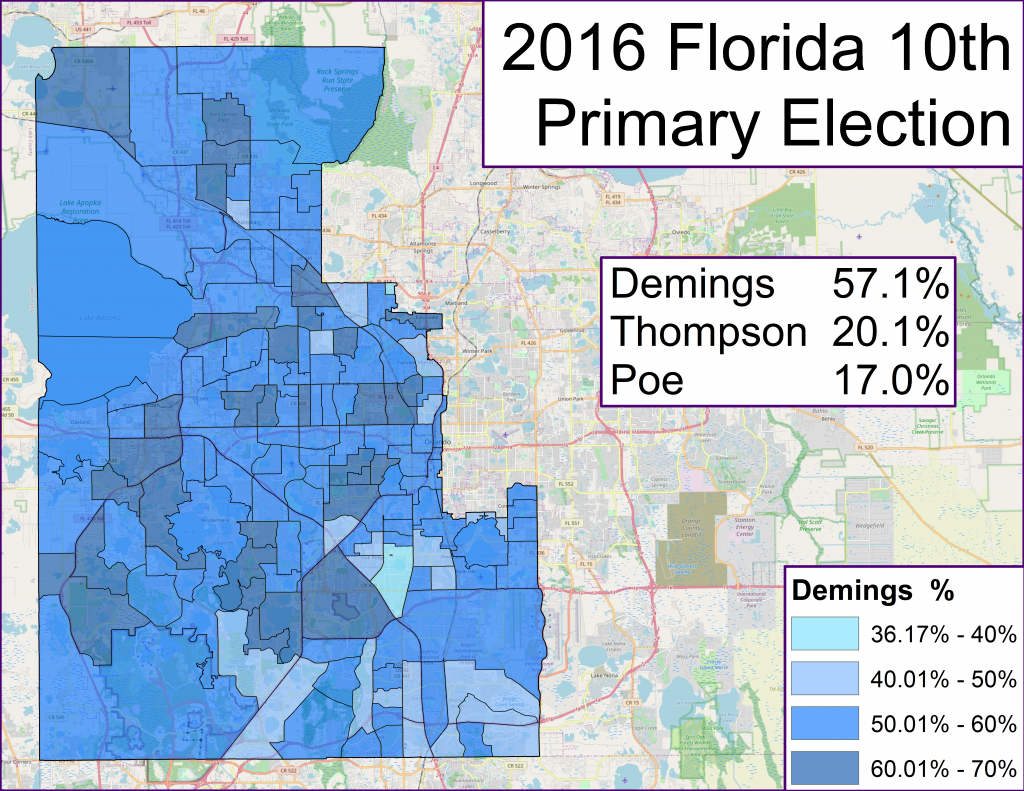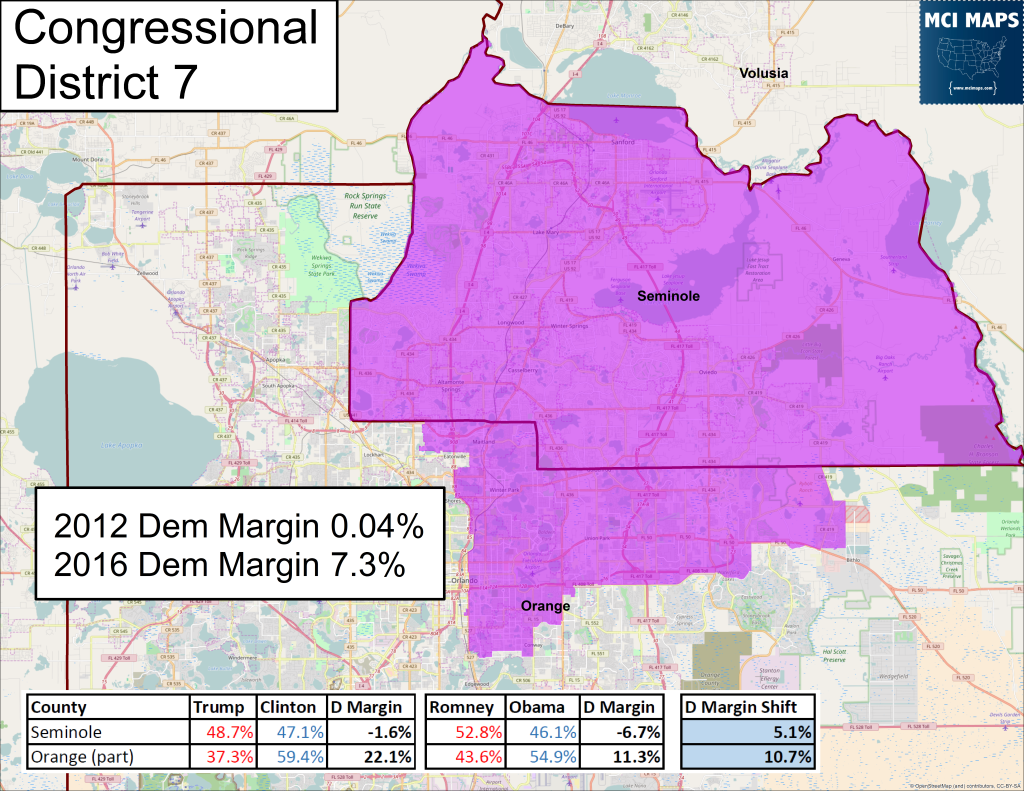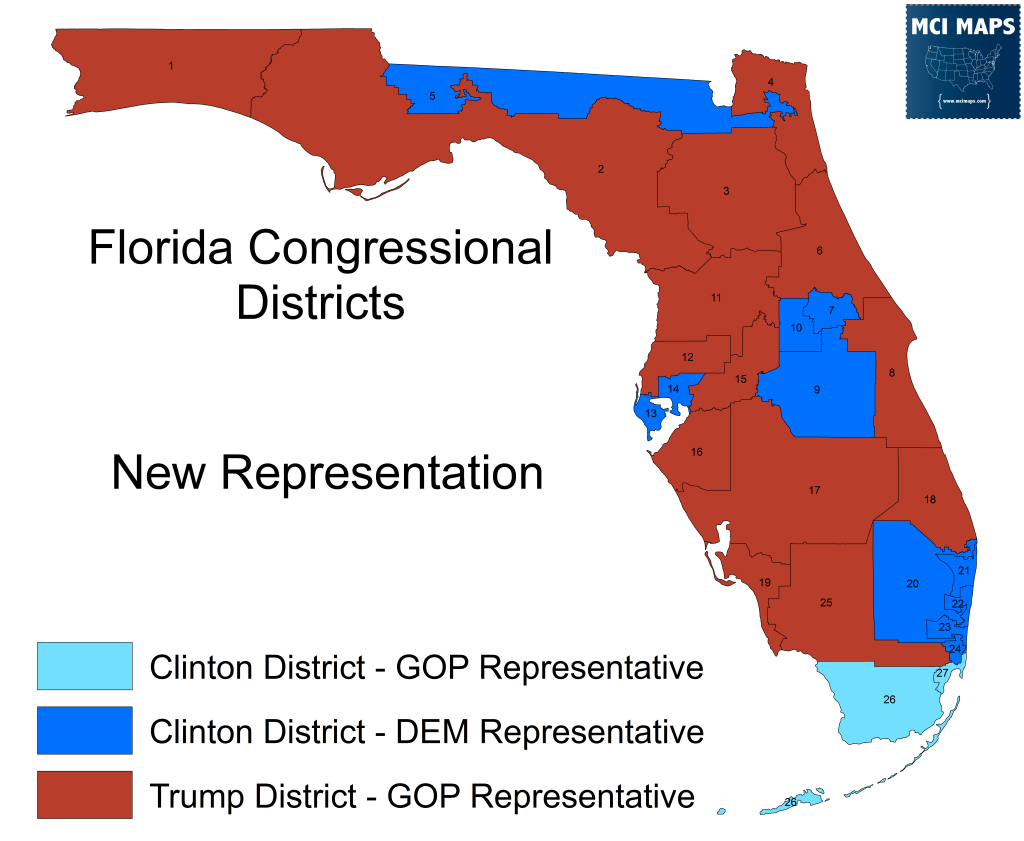In last week’s article, I covered the 2012 redistricting process. This map-making endeavor followed a year of Republicans desperately trying to find ways to circumvent the Fair Districts Amendments, which banned political gerrymandering. After a quick back-and-forth with the Florida Supreme Court, maps were approved and elections were held. However, that would be far from the end of the redistricting drama in Florida.
Lawsuit Filing
In February of 2012, a coalition of plaintiffs, made up of the League of Women Voters and Common Cause, filed a lawsuit against the Florida legislature. The coalition plaintiffs argued the Congressional maps were drawn with input from Republican operatives and designed to lock in Republican majorities. The case would go on for years and were subject to intense arguments over discovery and evidence. The original lawsuit was filed over the Congressional Map, but the Senate map would also become subject to a lawsuit. These suits had to be separate since one involved Amendment 6 (Congress) and the other Amendment 5 (state legislature).
(A note, the coalition plaintiffs have stated that the lack of a challenge to the state house map was based on the financial resources available for expert analysis on districts).
The GOP and Data Targeting’s Nefarious Scheme
The lawsuit over the redistricting process took several years; lasting from 2012-2014. As more details were revealed during the suit and eventual trial, the more damning the evidence got. The smoking gun was documents revealing that the Republican leadership had coordinated with the a GOP firm called Data Targeting to draft maps favorable to the party and members, and then have them submitted by aliases via the public portal. Data Targeting, a data firm run by Republican operatives, worked with Senate President Mike Haridopolos to craft GOP-favored maps and submit them under other names. A long battle emerged over Data Targeting even submitting documents as part of a subpoena, followed by the firm begging for its documents to remain closed-off from the public.
The eventual trial and discovery was a disaster for the Republicans. It revealed a massive effort by lawmakers to get around the Fair Districts rulings.

Documents and depositions over the State Senate maps showed that Republican leaders worked to coordinate with operatives and fellow Senators on drafting that chambers maps. Lawmakers worked to manipulate the public testimony tour by stacking the meetings with partisans who would discuss pre-planned statements. Senator Don Gaetz, father of accused sexual predator Matt Gaetz, was stated to be Senate President after the 2012 elections; and he worked to coordinate with Senators on how their districts would look.
The myth, one pushed by Don Gaetz, that the process was the “the most transparent” in history; was destoyed.
2014 Congressional Ruling
The Congressional trial was a nightmare for the GOP. It should be no surprise that in July of 2014, Florida Judge Terry Lewis found partisan intend was clear and struck down Congressional Districts 5 and 10. The 5th was held by Democrat Corrine Brown, while the 10th was held by Republican Daniel Webster.
The 5th district, Corrine Brown’s notorious JAX to Orlando seat, was struck down for multiple appendages that jutted out to grab African-American voters; with appendages like those in Seminole County called out. The 10th and 5th had a jagged border and the 10th’s appendage that jutted into Orange and grabbed a white pocket was struck down. The map below shows how the district borders in the Orlando region compared with black voter clusters. The court found that the 10th district was drawn to ensure the safety of Congressman Webster.
While drawing lines to ensure minority districts is covered under Fair Districts, Judge Lewis found the lines were drawn to also aid white GOP incumbents by maximizing the black share of the 5th beyond what was needed. The smoking guns of missing documents and evidence of GOP operatives submitting maps via the public portal under different names aided to the argument that the lines were driven partisan goals. In response, the GOP legislature, largely on party lines, passed a new map which aimed to fix the defects called out while not changing the partisan balance of the map.
The map would never be used, however. The 2014 primaries were already underway and the court agreed using the new lines for 2014 was not possible. The map would be used for 2016 and beyond. The plaintiffs were not happy with the narrow ruling, and appealed to the FL Supreme Court.
Congressional Plan Struck Down
Judge Lewis had seen the gerrymandering efforts of the GOP and his opinion reflected a narrow desire to fix what were considered the biggest problematic districts. However, in July of 2015, the Supreme Court of Florida, in a 5-2 decision, struck down several more districts and ordered the legislature to go into a special session. The court declared the entire map tainted by the redistricting process. While specific district issues were cited, the entire map was declared defective. You can read the opinion here.
NOTE: The lawsuit for the State Senate map was ongoing at this point and would also require a special session. This article only covers Congress. Next week will be the State Senate coverage.
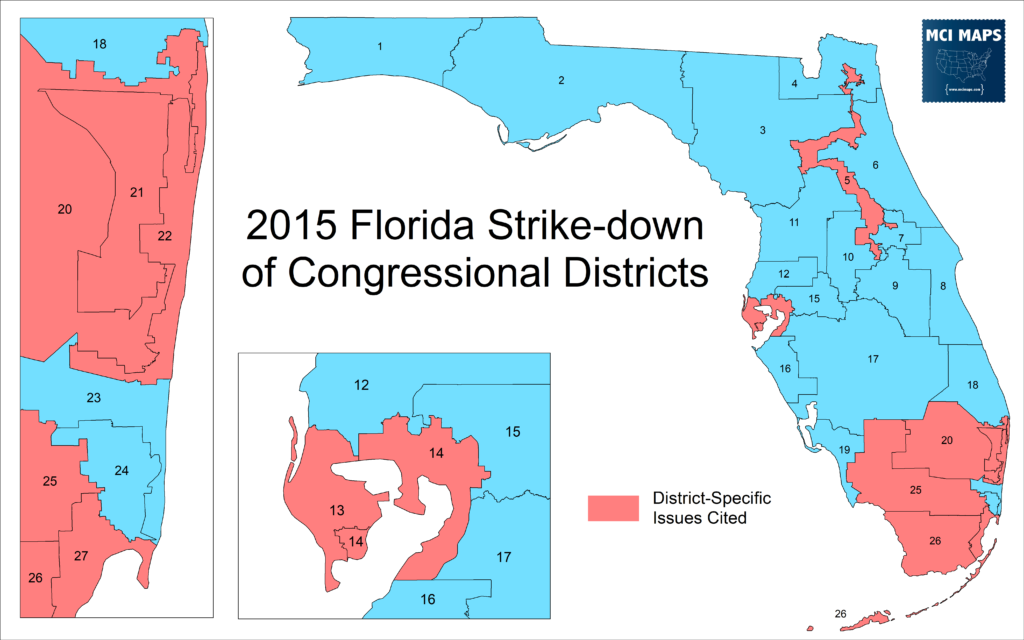
The key district notes from the court were (You can read my day-after analysis here)
- 20th and 25th needed to stop splitting Hendry County
- 26th and 27th needed to stop splitting Homestead
- 21st and 22nd had to be redrawn to become more compact (22nd coast-hugging called out specifically)
- 14th had to stop grabbing black voters from across the Tampa Bay
- The notorious 5th district going from Jacksonville to Orlando was a partisan gerrymander and an east-west district was ordered
The 5th was specifically called out as not needing to be a North-South configuration. Justice Pariente wrote
“We conclude that the Legislature cannot justify its enacted configuration. Despite the Legislature’s repeated contentions that a North-South orientation of the district is the only option and is essential to avoid diminishing the ability of black voters to elect a candidate of their choice, there is simply insufficient evidence to support that assertion,” ……. “the Legislature’s configuration was entitled to no deference in light of the trial court’s finding of unconstitutional intent.”
The 13th, 14th, and 5th are the most important for establishing precedent. In the Tampa Bay region, the court ruled that the legislature’s justification for the 14th crossing the Tampa Bay to grab St Pete’s black population was not justified. The legislature had justified the district by arguing the 14th was a “coalition district” that was over 50% non-white. However, the functional analysis showed that since the the black and Hispanic populations did not vote as a cohesive unit, the lines were not justified.
In striking down the 5th district, the court found that a JAX to Orlando border was not needed to create an African-American seat in North Florida. The court found that the lines were drawn to pack black voters in Orlando, bleaching the area and being used to ensure the election of white Republicans. The court specifically cited examples of east-west variations for the 5th – which would still be functionally black but more compact.
The Congressional Special Session
The special session for redrawing the Congressional maps was slated for August of 2015. Legislative staff was tasked with drafting a new congressional map. In early August, they released their proposal – which I wrote about extensively here. Session was planned for two weeks.
The initial “Base Map” only left four districts (1st, 8th, 18th, 19th) with no changes. Large numbers of voters would find themselves in new districts if the base map was picked.
The biggest changes were thanks to the dismantling of the old 5th district. The legislature, accepting their losses, agreed to draw an east-west version of the 5th; abandoning the 20+ year history of the JAX to Orlando configuration. This new district would be 45% Black VAP, down from 49%. However, while solidly Democratic and have 60% black in a democratic primary, it would perform as a black seat. This again harkens back to the functional analysis concept.
The district lines used came directly from a 5th that was drawn by the ROMO plaintiffs and cited by the court as a good district. While using that exact district was not ordered, the legislature would opt to use it and make no changes at all.
The dismantling of the 5th resulted in a new deep blue 10th district. This seat, overwhelmingly Democratic, would function as a black seat as well – with just over 50% of its primary voters being African-American. Val Demings would win the seat in 2016, bringing the total number of black Democratic congress people in Florida from 3 to 4.
This is the racial performance of the old plan and the final plan that would pass – for reference.
5th District Debate
When the Base Map was released, its 5th district was directly taken from the Supreme Court’s opinion. The district was never seriously at risk of being changed from the court’s recommendation as the session went on. However, it did see a great deal of discussion and debate around it. Congresswoman Corrine Brown was LIVID at the proposed district, and claimed it was designed to be a Republican seat. She claimed, without evidence, that the the African-American population was being inflated with prison populations. Now, while prison populations can lead to issues in county maps and smaller-populated districts, they have little effect on a Congressional seat. Brown’s claims were easily proven wrong by looking at the voting data that showed a solidly Democratic seat with a 60%+ African-American primary. This EPIC exchange between Brown and reporter Marc Caputo highlighted Brown’s complete lack of fact-based criticism.
Of course, Brown was not the only one with incorrect facts. A controversy erupted when Republican State Rep Janet Adkins claimed that prisons were indeed being used to inflate the newly-proposed 5th and would somehow lead to her defeat. Brown was able to latch onto this, but the point was quickly debunked (prisons being less than 1% of the district’s population). Adkins was not a player in the redistricting fight. She was just an idiot backbencher who’d go on to lose a race for Nassau County School Superintendent.
Brown would eventually sue over the prison issue but found no luck in court. You can read more about prisons and redistricting in an article I did in 2016. At the time, Jefferson County’s Commission was being sued for a prison being counted for a commission district. At the time, the prison made up 38% of the districts voters. That local lawsuit would succeed. Brown’s would not.
The debate around the 5th got even weirder when Senators Montford and Gibson proposed different plans to add in African-Americans from Gainesville. These plans created appendages that didn’t increase the African-American population in a meaningful way and were not needed.
I wrote more about these plans in this 2015 article. Nothing came of these efforts. Any efforts to make changes, even small ones, were rejected by House redistricting head Jose Oliva. Most Republicans had no desire to risk any court anger.
Central FL and the House/Senate Blowup
As the legislature worked through its maps, the coalition plaintiffs offered alternatives of their own. Things came to a dramatic end, however, as the house and senate could not come to an agreement. The house wanted to pass the base map (with a few minor tweaks); but the Senate wound up passing a different version. Republican State Senator Tom Lee offered an amendment to the base map – effecting specific districts in the Tampa to Orlando corridor. The two chambers were in agreement on all areas outside the central Florida region.
As I wrote about at the time, the Lee proposal was actually better for the Hispanic voters of Orlando – who were getting split under the base map. (Read both links for more details).
This outtake from my 2015 article sums up the situation well.
During Tuesday’s hearings, the legislative staff explained its decision to add Hispanics to District 10. They argued that in doing so, they created a “minority coalition” seat that could see African-American and Hispanic voters team together to elect a representative of their choosing. They cited the ruling for Judge Terry Lewis, where it was argued that District 9, which was 41 percent Hispanic Voting Age Population under its 2012 boundaries, was not functionally a Hispanic district. The issue has been that many Hispanics are registered No Party Affiliation, thus not allowing them to vote in the Democratic primary that all but guarantees who will win in the 9th. The legislative staff opted to pair Hispanics with African-Americans in District 10.
How the base map split the Hispanic community can be seen below.
Lee’s amendment, which focused on Orlando and Tampa, kept the 9th with a larger Hispanic population.
However, since the changes gave Lee a possible district to run in out of Hillsborough County, the house balked at accepting the change. The legislature had until August 26th to draw a plan – but by August 21st (the last day of the original session) the tension was already boiling over. The special session came to a dramatic end with neither side willing to compromise and lawmakers leaving town. The bad blood between both sides was most evident when Senate Redistricting head Bill Galvano walked out of a meeting with House Redistricting head Jose Oliva at a live meeting.
Here is a quick timeline of events – thanks much to Sun Sentinel Dan Sweeney’s breakdown
- Senate insists their map should be used
- Oliva and Galvano have a public meeting where Galvano storms out amid fighting
- Senate votes to extend the special session till the 26th to consider new maps
- House votes almost unanimously to reject an extension
- All efforts to find agreement falter.
As a result, it would be Judge Terry Lewis who would decide on a final map. He had the versions from the legislature, and proposals from the coalition plaintiffs. One of the plaintiff plans, CP-1, largely copied the House map with some specific changes; mostly in south Florida.
In total, seven maps were being presented to Judge Lewis; which I examined here.
Hearings and trials took place, which ended in October with Judge Lewis picking plan CP-1. The trial was its own drama as the plaintiffs and the Senate and the House argued for which plan was best. In December of 2015, the Florida Supreme Court signed off on the new Congressional plan.
The Final Congressional Map
Once the Supreme Court made its ruling, the years-long Congressional fight was finally settled. This was Florida’s new Congressional map.
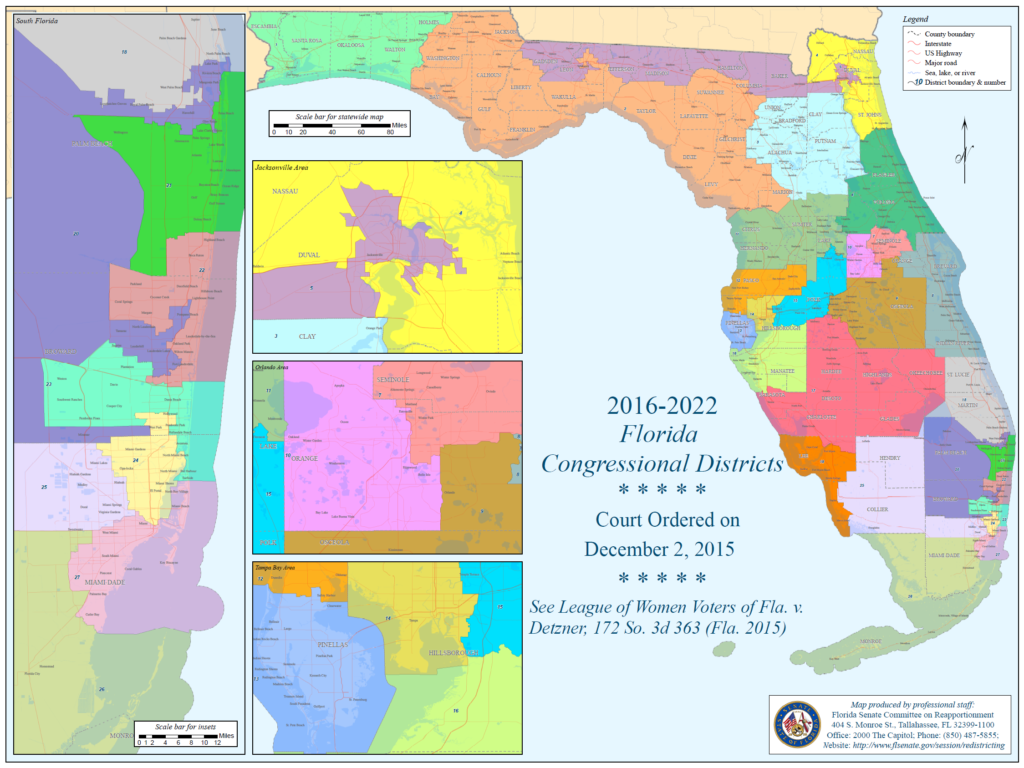
A comparison of the minority districts for the 2012 and 2015 map can be found below. The new map saw a reduction of the African-American population in both the 24th and 5th, but both were still solidly black-performing districts. The newly-configured 10th was billed as a coalition seat, but with an African-American primary of over 50%, it functioned as a 4th African-American seat.
The desired share of minority populations in the districts were a major source of legislative debate during the special session. Lawmakers and organizations debated among themselves over desired population shares. The court addressed this debate directly in its opinion. Justice James E.C. Perry, who is African-American, wrote.
(This plan) increases the number of districts where minorities, both racial and ethnic, will have the opportunity to elect the representatives of their choice. The boundaries may have changed, but the purpose and goal of the Voting Rights Act and Florida’s Fair Districts Amendment have been better met under this plan.m
Justice E.C. Perry
The opinion was viewed as a response to NAACP opposition to the chosen-map.
Minority Representation in the New Map
The new Congressional map resulted in increased minority representation. This was a major relief to both the NAACP, Hispanic lawmakers, and the Fair Districts backers. Races broke down as follows, first for the African-American seats, then the Hispanic Seats.
- CD5: Al Lawson defeated Corrine Brown in the Democratic Primary
- CD10: Val Demings would win a majority in the Democratic Primary
- CD20: Alcee Hastings had no trouble in the Democratic Primary
- CD24: Fredricka Wilson had no trouble in the Democratic Primary
- CD9: Hispanic State Senator Darren Soto won the Democratic primary
- CD25: Mario Diaz-Balart had no opponent
- CD26: Carlos Curbello defeated Joe Garcia in a rematch
- CD27: Ileana Ros-Lehtinen easily won re-election
The elections of Demings and Soto resulted in 4 African-American and 4 Hispanic members of Congress, up from the 3-3 before. Soto’s win came despite the noted reduction in Hispanic share of the district; and his primary win was 38% in a 3-way contest. He’d have little trouble holding the district after. His biggest challenge was from former Congressman Alan Grayson – who lost handedly to Soto in 2018.
Val Demings would easily defeat her two opponents with backing from the DCCC in the newly formed 10th. The primary was majority African-American; with Demings and Thompson both prominent African-American candidates.. You can read more about her election here.
A Lawson’s defeat of Corrine Brown came largely on regional lines, with Brown also suffering from a corruption indictment (that would later lead to prison). Brown vs Lawson was very notable considering both came into the Florida legislature in the 1980s and were part of the 1990s push for better representation. Reflecting their experiences, neither backed the Fair Districts amendments. However, while Lawson’s hesitancy was viewed more as a reaction to history – Brown became increasingly viewed as only concerned for her own self-interest.
With legal troubles mounting, Brown lost to Lawson in the Democratic Primary for the new 5th district. Despite making up over 50% of the vote, Duval county could not save Brown. Her Jacksonville base was weak and she was absolutely demolished by Lawson. The primary was over 60% African-American. Lawson’s strength in the west cut across all racial lines.
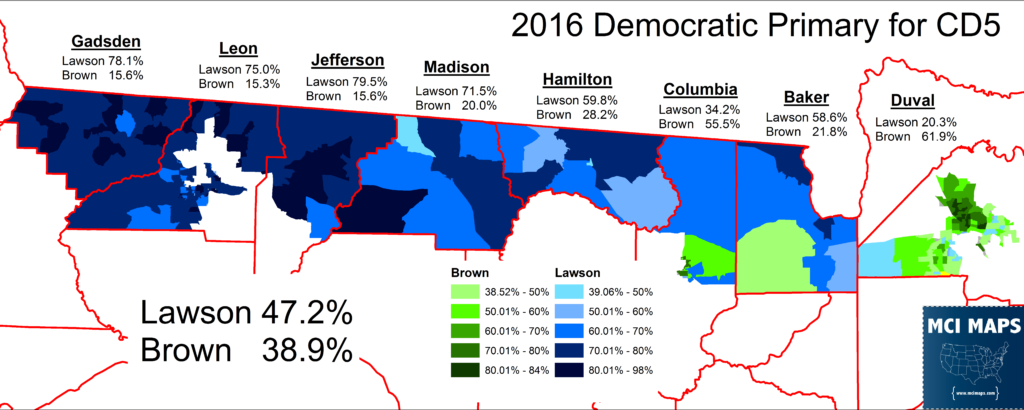
Personal note: Al Lawson is a legend in the Tallahassee political world and look back to this site in 2022 for an in-depth look at this electoral career.
Now lets look at how the maps performed politically.
Partisan Performance
Partisan-wise, the districts much better reflected the tight-nature of Florida. Under the old Congressional map, Hillary Clinton would have won 11 districts to Trump’s 17. Under the enacted plan, the breakdown was 14-13. I break down the results in much more detail here.
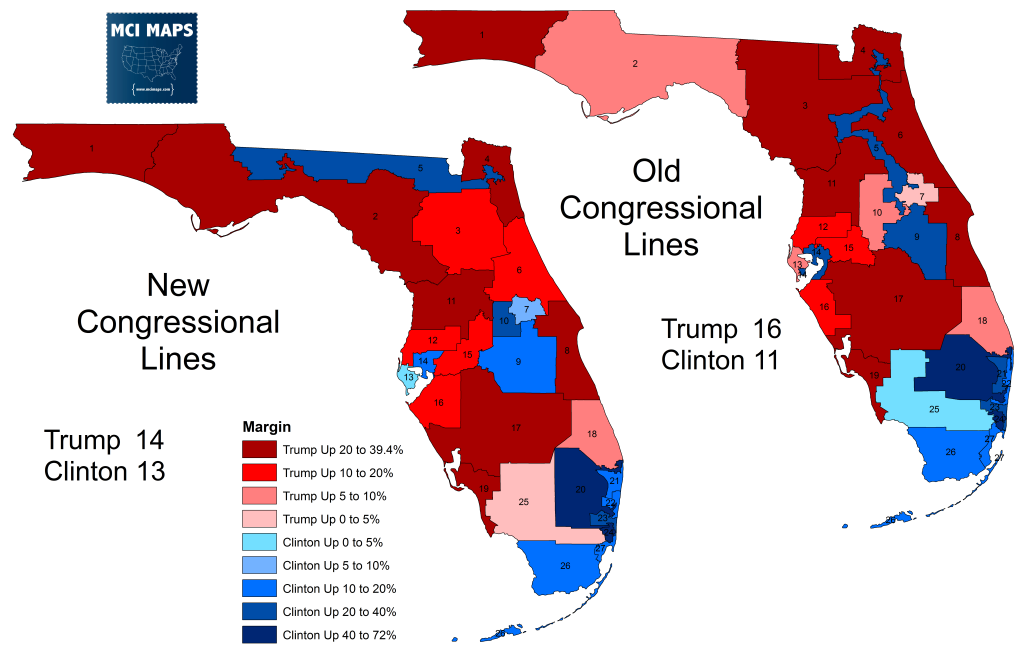
Democrats would net one additional member out of the results. They flipped the 13th, 7th, and 10th, but lost the 2nd and 18th. The loss of the 2nd was thanks to redictristcing. After Gwen Graham won the blue-dog and R-leaning 2nd in 2014, her district was transformed into a deep-red seat. The 18th saw little change in redistricting, but flipped GOP once Patrick Murphy left to run for Senate. This was still a good trade for Democrats. Holding the 18th, or even the old 2nd (especially once Murphy/Graham left) were not sustainable. Trading a Lean GOP 2nd for a Safe DEM 10th was on its own a better trade.
The Democratic gains in the 13th and 10th were redistricting-driven, while the 7th was more a result of a strong Democratic vs a lackluster GOP incumbent in a suburban seat that was moving Democratic. The 7th went from being a seat that was split between Romney and Obama going to Clinton +7. In the meantime, John Mica was checked-out for his re-election bid.
When it was all said and done, Democrats had 11 seats, all those Clinton won, minus the 26th and 27th.
Democrats would flip the 26th and 27th in the 2018 midterms. That 14-13 divide in the delegation was the closest the two sides had been since the early 1990s.
The final map would respond to political winds in the nation as a whole.
More 2015 Chaos Looming
The special session for the Congressional map was a mess for Republicans. After that session crashed and burned, another session would be needed for the State Senate maps. Would that session go any better?
No. Much worse. We will cover that next week.

